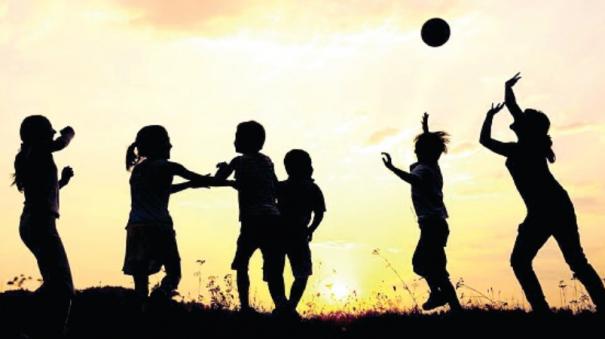Published : 20 Nov 2019 11:05 AM
Last Updated : 20 Nov 2019 11:05 AM
மொழிபெயர்ப்பு: உணர்வுகளில் மூன்றாம் பாலின குழந்தைகளுக்கும் மற்றவர்களுக்கும் வித்தியாசமில்லை

Transgender kids feel as much like girls or boys as non-trans children: study
Washington
Transgender kids feel as much like girls or boys as their non-transgender counterparts, according to a major study of US children that allowed observers to see how the young people conformed to social gender norms.
The authors of the study, researchers from the University of Washington who published their findings Monday in the scientific journal PNAS, recruited 317 trans children aged from three to 12 whom they compared to their brothers and sisters, as well as to 316 cisgender children, meaning those whose gender identity matches the sex they were assigned at birth.
The goal of the study was to compare the gender development of trans- and cisgender children to see if the children who had transitioned to another gender differed from those who had lived their whole lives identifying either as a girl or boy.
The transition process for children typically involves a change of clothing, haircut and name and nothing else.
The researchers studied the toys the children preferred, who were their principal playmates and if their clothes were more feminine or masculine.
They observed a strong consistency among the kids. Not only do transgender kids show identity and gender type preferences consistent with their current gender identity, they showed (it) to the same extent as cisgender kids do.
“Once children identify themselves as a girl or a boy (regardless of what their assigned sex is), they might look for ways in which people around them fulfill these roles and then try to be like them,” the report said.-AFP.
உணர்வுகளில் மூன்றாம் பாலின குழந்தைகளுக்கும் மற்றவர்களுக்கும் வித்தியாசமில்லை
வாஷிங்டன்
பெண் அல்லது ஆண் குழந்தைகளுக்கு எத்தகைய உணர்வுகள் உள்ளதோ அது போலதான் மூன்றாம் பாலின குழந்தைகளுக்கும் உணர்வுகள் உண்டு. இதை அமெரிக்கக் குழந்தைகள் குறித்து நடத்தப்பட்ட ஆய்வு ஒன்று உறுதி செய்திருக்கிறது.
வாஷிங்டன் பல்கலைக்கழகத்தைச் சேர்ந்த ஆராய்ச்சியாளர்கள் இந்த ஆய்வை மேற்கொண்டனர். இதற்காக 3-ல் இருந்து 12 வயதுக்கு உட்பட்ட 317 மூன்றாம் பாலின குழந்தைகளை ஆராய்ச்சியாளர்கள் தேர்வு செய்தார்கள். அந்தக் குழந்தைகளை அவர்களுடைய சகோதர, சகோதரிகளுடன் ஒப்பாய்வு செய்தார்கள். இது தவிர ‘சிஸ்ஜெண்டர்’ எனப்படும் பிறப்பில் இன்ன பாலினம் என்று அடையாளம் காணப்பட்டு அதே பாலினத்தைச் சேர்ந்தவர்களாக வாழும் குழந்தைகளுடனும் ஒப்பிட்டார்கள்.
மூன்றாம் பாலின குழந்தைகள் மற்றும் சராசரி பாலினக் குழந்தைகளின் பாலின அடிப்படையிலான வளர்ச்சியை ஒப்பிட்டுப் பார்ப்பதுதான் இந்த ஆய்வின் நோக்கம். இதன் மூலம் பெண் அல்லது ஆணாக தங்களுடைய வாழ்நாள் முழுவதும் வாழ்பவர்களுக்கும் ஒரு பாலினத்தில் இருந்து வேறொரு பாலினத்துக்கு மாறிய குழந்தைகளுக்கும் இடையில் ஏதேனும் வித்தியாசம் உள்ளதா என்பதைச் சோதித்துக் கண்டறியவே இந்த ஆய்வு மேற்கொள்ளப்பட்டது.
பி.என்.ஏ.எஸ். அறிவியல் ஆய்விதழில் இந்த ஆய்வறிக்கை பிரசுரிக்கப்பட்டிருக்கிறது. ஆடை, சிகை அலங்காரம், பெயர் ஆகியவற்றை மற்றிக் கொள்வது போன்றவற்றை தவிர வேறெதிலும் மூன்றாம் பாலின குழந்தைகளுக்கும் மற்ற குழந்தைகளுக்கும் வித்தியாசம் காணப்படவில்லை என்கிறது இந்த ஆய்வு. குறிப்பாக இந்தக் குழந்தைகள் தேர்ந்தெடுக்கும் பொம்மைகள், அவர்கள் யாருடன் விளையாடுகிறார்கள், அவர்கள் அணியும் உடையானது பெண்மை அல்லது ஆண்மை தன்மை
யோடு ஒத்துப்போகிறதா போன்றவற்றை ஆராய்ச்சியாளர்கள் ஆய்வுக்கு உட்படுத்
தினார்கள்.
அப்போது சாதாரண குழந்தைகளுக்கும் மூன்றாம் பாலினக் குழந்தைகளுக்கும் இடையில் எத்தகைய வித்தியாசமும் தென்படவில்லை. ஒருகட்டத்தில் தங்களுடைய பாலினம் என்னவென்று கண்டுகொண்ட பிறகே அவர்கள் வேறுவிதமாக நடந்துகொள்ள தொடங்குகிறார்கள் என்பதையும் இந்த ஆய்வறிக்கை சுட்டிக்காட்டியுள்ளது.
- ஏஎப்பி
FOLLOW US
Sign up to receive our newsletter in your inbox every day!



WRITE A COMMENT